
In today's highly competitive digital world, small businesses can't afford to trust gut feel or hope-for-the-best strategies. A data-driven content marketing strategy gives a blueprint to steady growth, measurable ROI, and actual customer engagement. From audience insights to content optimization, using data makes marketing science not guesswork and equips small businesses with the leverage they require to succeed.
A data-driven content marketing strategy is an organized methodology that applies quantitative and qualitative information to guide each step of the content process. What it means is your choices from what to create, where to share, and how to get your audience involved are based on actual facts, not speculation.
• Quantitative data: Analytics, traffic, keyword positions, conversion rates.
• Qualitative data: Customer feedback, brand sentiment, reviews.
Key takeaway: Data-driven strategies rely on facts and trends to inform content, provide value, and fuel business growth. Each piece of content has a well-defined purpose, which optimizes ROI and audience engagement.
Why Small Businesses Need Data-Driven Strategies
Get the Most from Limited Budgets
Small businesses need to make every marketing dollar count. Data-driven decision-making prevents waste by engaging only with high-leverage channels and tactics that yield the highest return.
Outshine Bigger Competitors
Data levels the playing field. By closely monitoring trends and consumer behavior, small businesses can quickly adapt and seize new opportunities that larger organizations often overlook.
Stronger Customer Engagement
Data reveals what truly matters to your audience. Personalized content, informed by real user activity and preferences, keeps customers coming back and sharing your message.
Set Clear, Measurable Goals
• Align marketing objectives with business outcomes (awareness, leads, sales).
• Make goals SMART: Specific, Measurable, Achievable, Relevant, Time-bound.
• Example: "Grow organic traffic by 25% in the next 6 months."
Know Your Audience with Data
• Get beyond fundamental demographics: probe psychographics, habits, interests, and needs.
• Leverage surveys, CRM data, social media metrics, and third-party studies.
• Create comprehensive buyer personas to tailor subject matter and voice.
Review Your Current Content
• Determine high-conversion assets and poor performers.
• Look at engagement, shares, bounce rates, keyword rankings.
• Recycle or revise worthwhile content; tidy up old posts to be concise and to the point.
Conduct Keyword & Topic Research
• Utilize SEO software such as SEMrush, Ahrefs, and Google Keywords Planner.
• Optimize for primary keywords (e.g., "content marketing for small business") and LSI keywords (e.g., "content strategy", "data-driven marketing", "business blogging") in order to enhance topical authority.
• Blend high-volume trends with lesser-competition, long-tail terms.
New data-driven keywords & LSI keywords for 2025:
• AI-driven content marketing
• Predictive analysis in marketing
• Content ROI measurement
• Small business local SEO
• Segmenting the audience
• Personalized content strategy
• Conversion rate optimization
Keyword density tip: Keep a primary keyword percentage of about 1.6% across your content.
Build a Content Calendar
• Schedule posts based on data: find best days/times from traffic and engagement.
• Create a combination of formats—videos, social posts, infographics, blogs.
• Add key events, product releases, or seasonal trends for your audience.
Map Out Your Content Funnel
• Awareness: Educational blog posts, how-tos, infographics.
• Consideration: Case studies, comparison guides, webinars.
• Conversion: Demos, testimonials, special offers.
Organize each step with laser-focused content, informed by data on which formats and offers are most effective for your audience.
Maximize Distribution Channels
• Identify where your audience spends time email, social sites, forums.
• Double down on highest-performing and cost-effective channels using data analytics.
• Experiment syndicating content to Medium, LinkedIn, or industry-specific sites.
Leverage A/B Testing and Continuous Optimization
• Test various headlines, CTAs, designs, and send times.
• Perform A/B (split) tests on email, landing pages, and social posts to observe what engenders engagement and conversions.
• Leverage findings to iteratively refine subsequent content.
Track Results using the Right KPIs
Small business content marketing key performance indicators:
• Organic traffic increase
• Engagement (shares, comments, avg. time on page)
• Lead gen (downloads, sign-ups)
• Conversion rates
• Keyword rankings
• Content ROI
Monitor results in real time and modify strategy accordingly.
Latest Trends & Keywords for 2025
To stay at the forefront, include the freshest digital marketing trends and keywords in your approach:
• AI content analysis & generation: Utilize AI tools to bring insights from data to the surface and accelerate content creation.
• Voice search optimization: Optimize for conversational keywords to rank for voice searches.
• Short-form video: Apps like TikTok, Instagram Reels, and YouTube Shorts are seeing immense engagement.
• Hyper-personalization: Provide dynamic, personalized experiences based on user behavior.
• In-depth cluster content on main topics to enhance reputation and ranking: Topical authority
• Capture traffic from SERPs using featured snippets and instant answers: Zero-click searches
Must-Have Small Business Tools
• Google Analytics / GA4: Monitor site visits, conversions, user journey.
• SEMrush / Ahrefs: Analyze keywords, competition, backlinks.
• BuzzSumo: Find content, analyze influencers, popular topics.
• HubSpot / Mailchimp: Lead generation, email automation, CRM.
• Canva / Piktochart: Simple, cost-effective design for infographics and visuals.
Avoid Common Mistakes
• Not Paying Attention to Data: Don't trust gut feelings—let analytics dictate choices.
• Inconsistent Publishing: Post haphazardly and momentum, and rankings, are lost.
• Neglecting What Your Audience Actually Cares About: Keep your knowledge up-to-date as trends and behavior change.
• Chasing Only Vanity Metrics: Monitor outcomes that relate to specific business objectives (conversions, leads, not likes alone).
• Skipping Optimization: Regularly update, test, and optimize content based on the most recent performance data.
Actionable Next Steps & Conclusion
1. Get started: Conduct a website and content audit with performance metrics.
2. Research: Collect primary and LSI keywords; chart out current topic trends.
3. Plan: Define specific, quantifiable goals and determine your core content themes.
4. Execute: Create a content calendar and post consistent, valuable content.
5. Analyze: Monitor major metrics with analytics tools; employ A/B testing for ongoing improvement.
6. Optimize: Modify your plan each month according to what the data shows.
Keep in mind: The greatest content marketing strategies are dynamic documents. By basing each choice on the most current data, small businesses can build enduring influence, outshine bigger rivals, and transform content into growth drivers while establishing trust with the appropriate clients.





